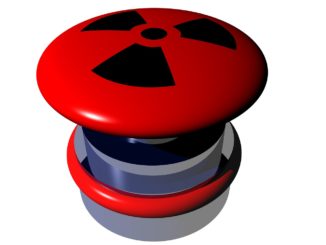
Throughout human history, military powers have looked to exploits the advancements in science and innovation to make progress in the war zone. Technologies played a significant role in fighting wars like in WW1, Chemical weapons were used that led to the Geneva Convention to prohibit the chemical gases in wars, likewise in ww2, atomic weapons were used against Japan-resulted in preventing the proliferation of nuclear weapons. Consequently, in this century, the warfare debate has been shifted towards the emergence of new technologies that have the potential to alter the nature of warfare. Emerging technologies in which Artificial Intelligence (AI), Robots, Drones, cyberspace, hypersonic, ASAT, and many others are taking lead poses a serious threat to upcoming conflicts. Due to their advantageous effects, states are heavily investing in these technologies which create a new arms race among states. There is a higher probability that developing technology will pose a problem for arms control. The implications of emerging technologies on arms control are alarming due to their potential applications in war.
The AI, Hypersonic weapons, drones, and cyberspace have enough potential to completely revolutionize the war. But AI is believed the most to revolutionize warfare by introducing smart machines in military operations. AI consists of several techniques installed in machines to monitor the movement and military happening around them and to take an independent action based on the intelligence shifted to them. AI is useful in cyberspace to watch the cyber attacks from the opponent and to counter them. Similarly, aerial drones equipped with sensors can detect and identify enemy tanks on a battlefield, allowing them to easily target them. AI and cyber-attacks are most challenging to arms control because it is difficult to limit them through arms control agreements as these cannot be easily quantified.
Autonomous weapons or lethal autonomous weapons in which AI and drone technology are collectively used to identify the adversary’s assets and to attack them. Autonomous weapons are also named killer robots and can be used to track the adversary without human involvement. US Department of Defense has defined Autonomous weapons as, “A weapon system that once, activated, can select and engage targets without further intervention by a human operator.” The widespread deployment of these weapons would jeopardize not just arms control, but also international security and humanitarian law.
Cyber-attacks used to disrupt the infrastructure spread misinformation and steal data. This can be done by individuals or some independent groups but now the governments are also acquiring the cyber weapon capability to sabotage their adversary’s institutions or to steal their secret or valuable information. Cyber attacks are not only used to disrupt the system but also caused physical harm as well.
Hypersonic weapons are weapons that travel faster than the speed of sound and can carry nuclear and other conventional payloads. Therefore, they are not only for a rapid response but also for nuclear delivery systems. It is used to attack rapidly and faster when the enemy is not even prepared and not even imagine to be attacked. It could further increase the chances of assured retaliation and strategic stability is also undermined by these non-nuclear weapons.
ASAT is an anti-satellite test that is causing the space environment to destabilize As a consequence of ASAT, space debris presents an expanding danger to the conduct of activities in outer space, particularly orbits around the earth. For example, the Chinese ASAT test in 2009 generated a large amount of debris, raising international concerns. There is a need for a treaty to ban the ASAT test that could promote further arms control measures in space. It would increase security and safety in outer space and prevent space-based conflicts.
States are acquiring these technologies rapidly and a new arms race has been started among major powers. Due to the anarchic nature of the international system, states moved towards an arms race when their security is at risk. Whenever a new technology jumped into the international arena, states start acquiring it to enhance their capabilities and security measures. Nor does a state not the international community thinks about its arms control measures, but when it comes to threatening the life on the planet and even the planet itself, focus shifted towards arms control. States have acted in the same way across decades of conflicts and technical advances. We can analyze the spread of new emerging technologies and their consequences when we looked back in history: what happened when states acquired nuclear technology? Similar behavior in the space race can also be seen. The way space race has started and by the passage of time, it has been increased, and now it is an increasing concern of the major powers and international community to limit or control the military uses of the space. Similarly, the spread of these technologies having the potential to alter the patterns of conflict is pushing the states into a new arms race. It would be uncontrollable if not timely addressed or resolved.
Machines make life simpler empowering them to manage the conflict or to make decisions on their own throughout the conflict and lead the world would be catastrophic for humanity. Nuclear weapons and other technologies with potential outcomes can still be controlled or limited due to human involvement in their command and control systems. But the advent of new technologies such as AI and autonomous weapons or killer robots might not be controlled because the machine itself has to take decisions.
The United States is again the leading state in which India and Israel are partner states and for the US, China and Russia’s rapid advancement is challenging. Most often, the US is blamed for pushing the states into an arms race by investing in defense expenditure and create an insecure environment for competitive states so they also start acquiring similar technology. The same concern was raised in 2019 of Chinese White Paper in which they stated that “The US has provoked an intensified competition among major powers, significantly increased its defense expenditure, pushed for additional capacity for nuclear, outer space, cyber and missile defense, which undermines the global strategic stability.”
New emerging technologies have increased the chances of conventional war and the possible use of nuclear weapons by making war easier. Such as through AI self-directed swarms can find and attack the enemy’s assets like submarines, radar systems, and surface ships. Hypersonic missiles enable to strike first during a conflict and also could carry a nuclear warhead and cyber-attack at the very start of the conflict. All of these methods create uncertainty in the targeted state’s ability to conduct a rapid nuclear strike in retaliation.
Till now, there is no serious effort has been taken to control the military uses of emerging technologies. Efforts to limit the killer robots and Convention on certain Conventional weapons (CCW) including the UN and US Department of Defense raising concern over AI use and adoption of certain principles did not address the full spectrum of threats posed by these technologies. A more comprehensive set of measures is required to effectively regulate these technologies by the international community with a special focus on their applications and increasing risk of the use of nuclear weapons.
There is another factor that could be a cause for the increasing arms race is that the policymakers which from time to time encourage the competitive state to acquire the similar capability that has been acquired by its enemy. Whenever a state had acquired a technology, it raises concerns in policymakers from the other side. When the potential outcomes of the usage of technology are realized internationally, it shouldn’t be further promoted or not the policymakers should encourage a state to go for that, this is how the arms race increases.
There is a need to limit the military uses of the new technologies but it wouldn’t be effective until fully ban on its development. During the cold war, US President Eisenhower took the initiative to spread nuclear technology with the purpose to promote its peaceful uses. Whenever a state acquires a technology, either it is for peaceful uses, it could be transformed for the military purpose when it requires or when it comes to its security. The most effective way to prevent them is to destroy or halt the development of such technology when the implications are obvious.
![]()




Worth a single reading👏